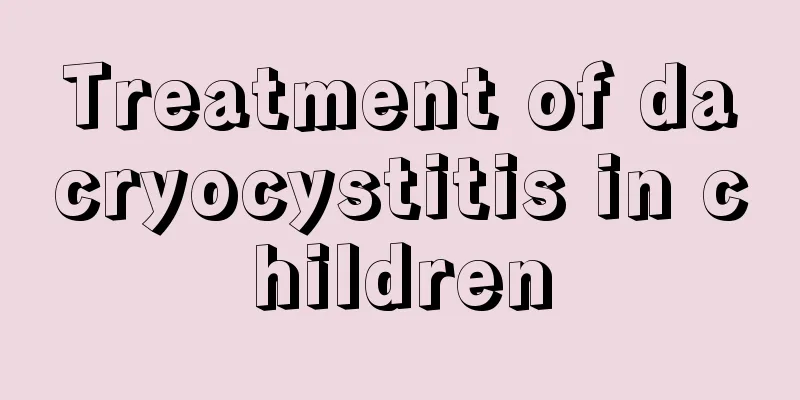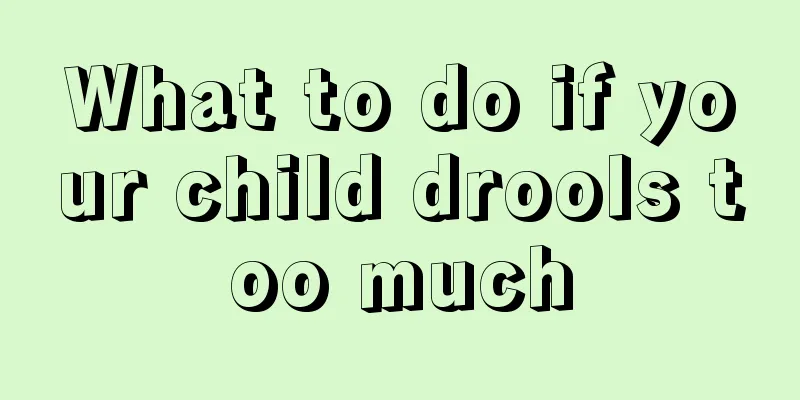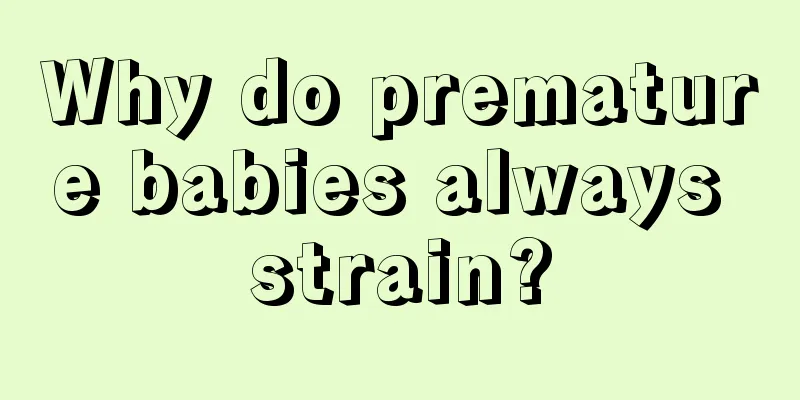The baby has fat particles on his face

|
Many mothers have found small pimples like fat particles on their babies’ faces, and they can only wrap their babies’ hands for fear that the babies will scratch them and leave scars or cause infection. The small bumps on the baby's face that look like fat particles may be neonatal eczema. It may also be due to the hot weather and the baby sweating too much and getting prickly heat, or it may be fat particles. Here we will introduce to you the differences between these types of acne. 1. Neonatal eczema (milk ringworm)Neonatal eczema is an allergic skin disease, which is commonly known as an allergic skin disease. The main cause is intolerance or allergy to ingested, inhaled or contacted substances. Children with eczema initially develop red skin and rashes, followed by roughness and flaking of the skin. Touching the child's skin feels like touching sandpaper. Heat and humidity can make eczema more obvious. Neonatal eczema usually develops 1 to 3 months after birth, gradually improves after 6 months, and most children gradually recover on their own after 1-2 years old. Some children develop the disease during infancy or childhood. The severity of the disease varies. The rash is common on the head and face, such as the forehead, cheeks, and top of the head, and then gradually spreads to the chin, neck, shoulders, back, buttocks, limbs, and can even spread throughout the body. At the beginning, there are scattered or clustered small red papules or erythema, which gradually increase in number, and small blisters, yellow-white scales and crusts can be seen. There may be exudation, erosion and secondary infection. The children are irritable, cry at night, have difficulty sleeping, and often itch all over. Since the lesions of eczema are on the epidermis, no scars are left after healing.
In the hot summer, due to the high temperature and humidity in the environment, excessive sweating is not easy to evaporate, and the sweat soaks the stratum corneum of the epidermis, causing the opening of the sweat gland duct to narrow or block. After sweat is retained in the sweat gland duct, it ruptures due to increased internal pressure. The overflowing sweat penetrates and stimulates the surrounding tissues, causing papules, papulovesicles and small blisters to appear at the sweat pores. Therefore, it is possible for babies to develop prickly heat on their faces. Usually, babies get prickly heat on the neck, chest, back, elbows, popliteal fossa and other parts of the body. Children may get prickly heat on the head, forehead and other parts of the body that sweat frequently.
Some babies are born with two sides of their nose. Some small yellow-white particles with a diameter of 1 mm appear on the forehead, cheeks and face. The baby does not feel any pain and the particles disappear when the baby is about one month old. Sebaceous cysts are actually a skin disease, which are mainly caused by oil blocking pores or the skin repairing tiny wounds. Adults generally say that you should pay attention to keeping your skin clean and not use overly oily cosmetics, but for babies, you don’t have to worry about it, it will generally go away on its own. |
<<: What causes joint pain in children?
>>: Risks of adenoids surgery in children
Recommend
Why can't children grow meat even if they eat?
In daily life, children's physical developmen...
What are the benefits of children's aerobics?
Every parent must be very concerned about the phy...
What are the developmental indicators of a 13-month-old baby?
The baby is 13 months old. Parents of these child...
What is the normal height for a 10 year old child?
The height of the child is the most concerned iss...
28-month-old baby height and weight development standard
A baby's growth requires the company of his p...
What anti-inflammatory drugs are good for children with red testicles?
Testicles are important organs in men. The testic...
What are the symptoms of rubella in children
The phenomenon of urticaria in children is a prob...
What to do if your 4 year old is rebellious?
As children grow up, they will show some rebellio...
What to do if your child has tear duct obstruction
Generally speaking, it is very normal for childre...
What to do if children have indigestion
Indigestion in children is a very common phenomen...
What causes small red bumps on children?
Children's skin is very delicate. If it is ir...
What should I do if my baby's hair is a little yellow?
Hair problems can reflect whether our entire body...
What to do if your child has blindness
Due to lack of attention to eye hygiene, often ru...
What should I do if my baby always sweats?
For babies, if they often sweat, parents must pay...
What causes rough skin on children’s legs?
Everyone wants their skin to be smooth and delica...









